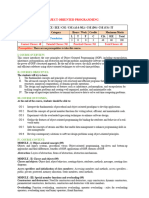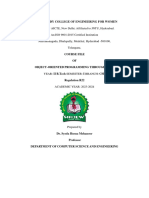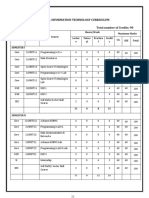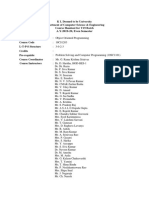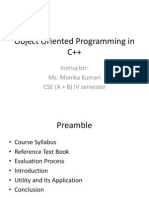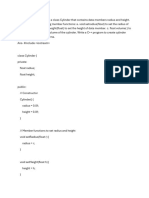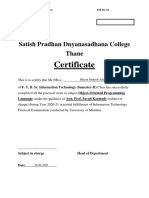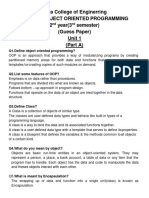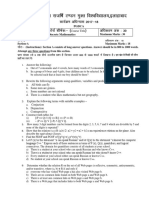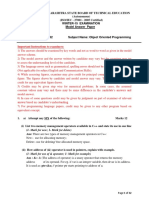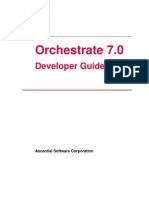0% found this document useful (0 votes)
113 views3 pagesOOPS Syllabus
The document outlines the objectives of presenting the concept of object oriented programming, which includes studying OOP principles in C++ and Java like classes, objects, inheritance, and polymorphism. It also covers programming concepts in Java like interfaces, packages, multithreading, exceptions handling, and applets. The document is divided into 5 sections that will cover these OOP and Java programming concepts in detail.
Uploaded by
Jedidiah Benhur MargoschisCopyright
© Attribution Non-Commercial (BY-NC)
We take content rights seriously. If you suspect this is your content, claim it here.
Available Formats
Download as DOC, PDF, TXT or read online on Scribd
0% found this document useful (0 votes)
113 views3 pagesOOPS Syllabus
The document outlines the objectives of presenting the concept of object oriented programming, which includes studying OOP principles in C++ and Java like classes, objects, inheritance, and polymorphism. It also covers programming concepts in Java like interfaces, packages, multithreading, exceptions handling, and applets. The document is divided into 5 sections that will cover these OOP and Java programming concepts in detail.
Uploaded by
Jedidiah Benhur MargoschisCopyright
© Attribution Non-Commercial (BY-NC)
We take content rights seriously. If you suspect this is your content, claim it here.
Available Formats
Download as DOC, PDF, TXT or read online on Scribd
/ 3



